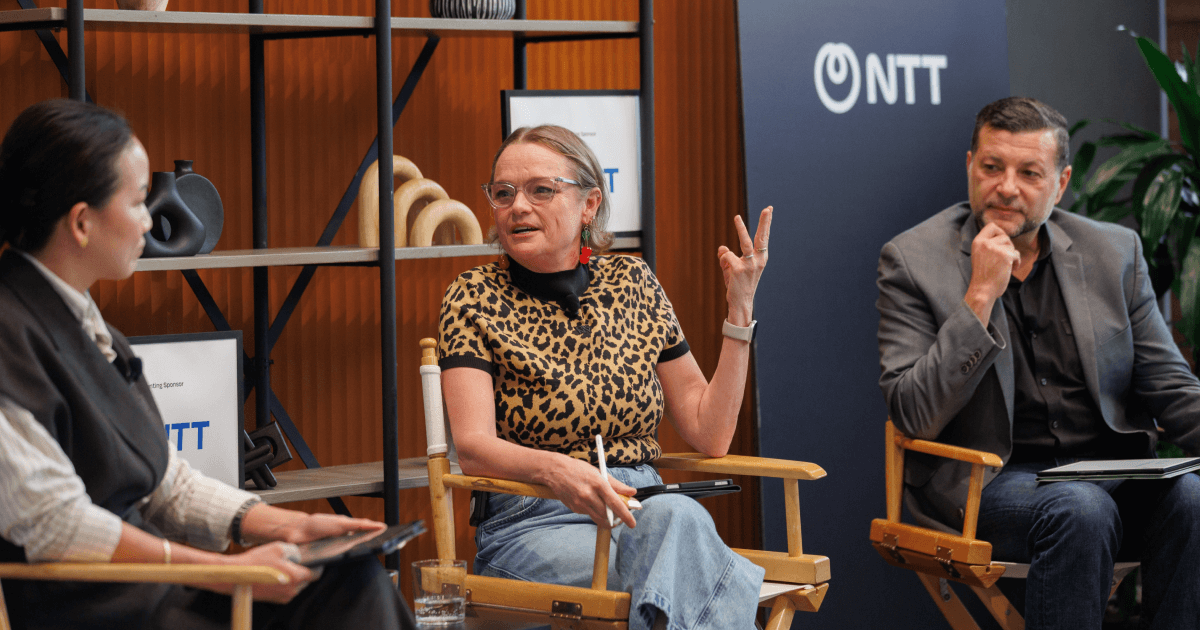Aim, Engage, Grow: How we turn bold ideas into market-defining products


Over the last two decades, we’ve celebrated Silicon Valley startups for tremendous risk-taking, innovation, failing fast, and ultimately bringing incredible, disruptive technologies to market that reshape or outright create brand new markets.
However, enterprises do not have the luxury of acting like a startup. It’s more nuanced than that. With the right planning combined with a product and platform mindset, enterprises can achieve startup velocity and do it at scale, not as a one-off, but in a way that continuously delivers winning experiences.
Turning bold ideas into reality isn’t easy. That’s why Launch by NTT DATA’s mission is to help clients strategize, ship, and scale ambitious digital experiences. We partner with our clients to create products and platforms, and set them up for continuous product success. We do this using a three-stage, iterative framework we call Aim, Engage, Grow.
Ideating, building, and scaling truly transformative platforms and products requires a precise and proven approach. It’s like building houses. You may always pour the foundation, frame the walls, and build the roof in the same order, but that doesn’t mean every house looks exactly the same when it’s done. Far from it.
Aim, Engage, Grow equips leaders with the processes to create, identify, and validate top business concepts, rapidly test them with real customers and users, then scale the successful ones.
How it works:

In the Aim stage, we help our clients precisely understand — or sometimes even uncover or create — their target. We expertly define what both the users and the business need through research, user interviews, road mapping, and other front-end activities to help us learn exactly what we're solving for while forging a path that details how we'll execute together.

In the Engage stage, we are focused on shipping a minimum viable product and getting the technology into users' hands as quickly as possible. Software over slides is a rallying cry of ours and we use that mantra to help our enterprise clients execute this stage with incredible velocity. Shipping working software and testable experiences build incredible momentum while positioning our teams to gather meaningful feedback quickly, powering the next iterations. At the same time, we’re proving to stakeholders that their product is relevant (or isn't) and should be pursued with confidence.

The Grow stage is where we focus on market traction, product expansion, and scale. Users have asked for new features and the business might be looking to expand the reach of the technology to attract net new user types. These possibilities come with a buzz of excitement, not just from the consumers who see something new and cool, but also from the internal stakeholders who can now envision a new revenue stream, a new service, and the impact their hard work will make.
What does the Aim, Engage, Grow methodology look like in real life?
Our work with New York City’s Metropolitan Transit Authority (MTA) put Aim, Engage, Grow into action. MTA leaders approached us as more than 50,000 digital screens were being installed inside subway stations throughout the city, but they were of little value to transit riders if they couldn’t display targeted information in real time.
In the Aim stage, we immersed ourselves in how the MTA worked and how riders receive information. Our main discovery: the screens weren’t their core challenge — data was. The MTA didn’t need yet another system to copy and paste rider messages into. What they needed was a single source of truth that not only published messages on the screens but on all of the MTA’s channels, for maximum rider awareness.
We hit the Engage stage running, getting our Minimum Viable Product out and ready for testing in just four months — much to the delight of a core group of customer service representatives who were eager to communicate with New Yorkers quickly and efficiently.
In the Grow stage, we expanded the functionality beyond the screens and started pushing messages out to all of the MTA’s channels. With the tap of a button, rider messages went to the MTA’s website, via email, text messages, tweets, and even Google Maps displayed up-to-the-moment information.
After running through the Aim, Engage, Grow cycle many times over, our platform, MTA Mercury, instantly made three New York-sized impacts. The first was speed: riders on subways, buses, and commuter railroads received important and relevant information about their trip faster than ever. The second was consistency: with a single source of write-once-publish-everywhere rider messages, the MTA was able to define and execute a unified content strategy across every distribution channel. The third was consolidation: we turned four legacy systems into a single communications platform.
Some people call it a CMS. We like to call it a grand, central station. Can you be daring and bold while being pragmatic and precise? Of course. It's a sweet spot we help our clients unlock.
Check out some of the other bold ideas we’ve turned into reality and then let’s talk about what the Aim, Engage, Grow framework can do for you.



